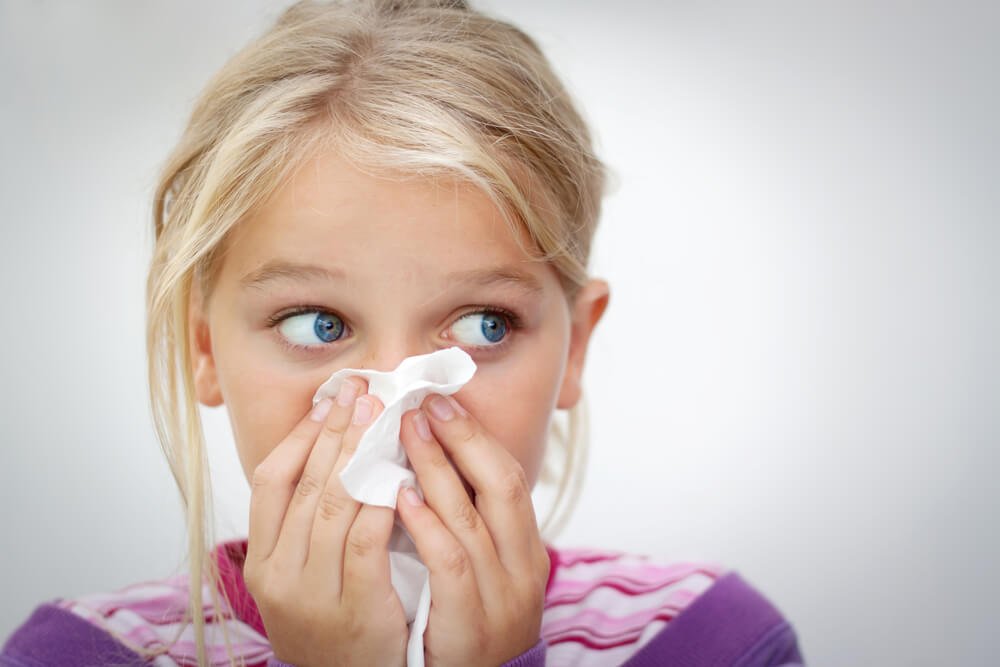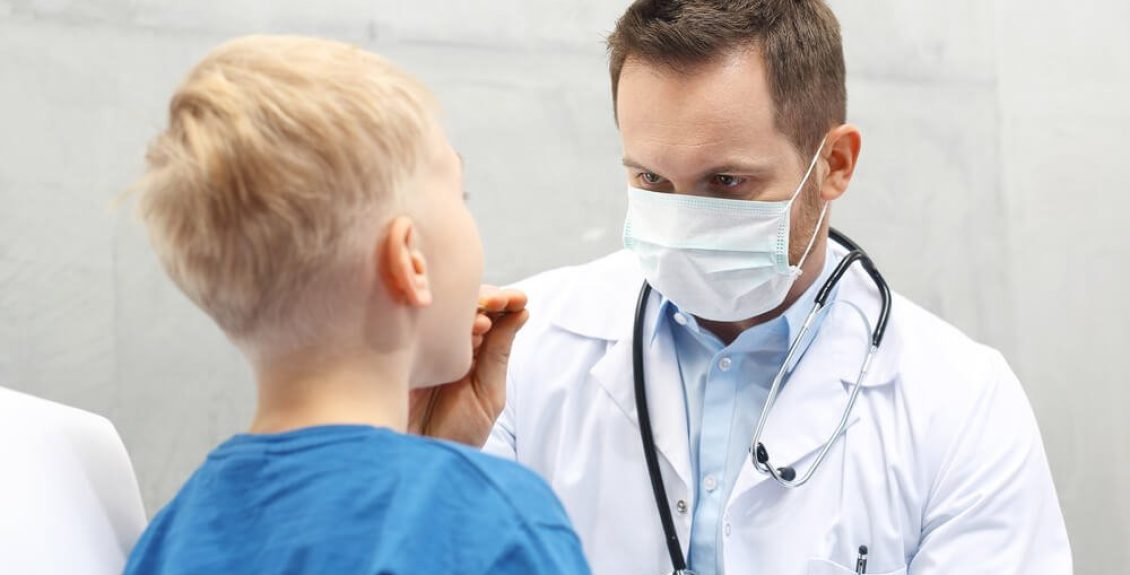Many parents are concerned when their child shows signs of illness and seek medical help right away. Your instincts are accurate in wanting to seek assistance, but you may not need to rush to the doctor’s office every time a fever or cold symptoms appear.
When your child has cold viruses, most parents do not go to the doctor. Staying at home, resting, drinking, and taking over-the-counter drugs are usually sufficient. However, some common cold symptoms may need a trip to the doctor or even urgent care. Knowing when to act can help you avoid serious complications as well as the progression of your child’s condition.
What Is A Cold?
A cold is actually a viral infection in the nose and throat. While it can be very uncomfortable to deal with a cold, they are normally a relatively harmless infection. Colds can be caused by several different types of viruses and an average adult typically has a cold 2-3 times each year. However, young people are likely to get a cold more often. If your child catches a common cold, you can expect them to recover in 7-10 days without needing to see a doctor. If they don’t seem to be improving or are getting worse, come see us. Anytime your child isn’t feeling well, we want you to have peace of mind about their condition — even when it is just a common cold.
What to Watch For
Symptoms of a cold tend to come on gradually and may include a stuffy nose, congestion, sneezing, reduced sense of taste and smell, upper respiratory tract infection, a scratchy throat, and cough. Call your doctor if your child shows signs of one of these things:
1. Sore Throat
You should consult a doctor if your kid’s throat feels so much that they can’t even swallow. Although pharyngitis (sore throat) is common with colds and flu, it should not be severe enough to prevent them from eating, drinking, or sleeping.
Rest and at-home treatment should help most sore throats. A severe sore throat should be treated by a doctor if it is accompanied by a fever of more than 104 degrees F or if it is preventing them from sleeping. These symptoms could indicate a subsequent bacterial infection.
A red skin rash may accompany throat tightness and pain in cases of streptococcal infection (strep throat).
2. Fever
One of the most common symptoms reported to doctors is a fever. A temperature of more than 100.5 degrees Fahrenheit is considered a fever. The body’s response to infection is a fever, which indicates a good immune response. It’s important to remember that fever itself is not an illness, rather it is a sign of an underlying health condition.
If your child’s temperature rises above the maximum recommended for his age, and If they’re experiencing any of the following symptoms, call your doctor right away
- Any fever in an infant under the age of three months.
- A rectal temperature of 101 degrees F or greater in a child aged three to six months, and 103 degrees F in a child aged six months or older.
- The youngster is over three months old and has been experiencing a fever for more than three days.
3. Coughs
Coughs from common cold and flu are bothersome at best, but they can also be warning signs of something more serious. In general, if you’re child have a cough, you should be concerned if:
- Is it becoming better or worse?
- Is it obstructing your breathing?
- Excessive or atypical mucus or phlegm is produced.
If your young children exhibit the following symptoms, you should seek medical attention right away:
- Cough that improves for a while then returns or worsens
- Breathing that is too fast or too laborious
- Pain in the chest
- Fever of more than 104 degrees Fahrenheit (or any fever in children under 12 weeks)
- With each inhales, the ribs retract (draw in).
- Lips, fingernails, or skin that are bluish
- Sneezing bloody mucus
4. Congestion
When you have a cold or the flu, congestion is usually not a major concern, but there are situations when chronic or severe congestion requires medical attention. Even a simple cold that doesn’t go away in adults or children can lead to secondary infections like sinusitis, acute bronchitis (chest cold), or pneumonia.
Common colds usually last seven to ten days. Those that linger longer, especially in toddlers, should always be a cause for concern. When it comes to congestion, colds are more likely to cause runny noses and nasal congestion than flu, both of which raise the risk of sinusitis.
If the congestion lasts more than 10 days or is accompanied by any of the following symptoms, you should consult a doctor right away:
- Fever of more than 104 degrees Fahrenheit
- Breathing difficulties or shortness of breath
- Coughing up a lot of bloody mucus
5. Headaches
Colds and flu are known to cause headaches. Colds are caused by a buildup of pressure in the sinuses and nasal passages. Headaches are common with the flu, and they tend to spread over the forehead and behind the eyes.
Headaches caused by a cold or flu will usually go away on their own as the rest of the symptoms do. Secondary infection is known as encephalitis, in which the flu virus infiltrates the brain and produces inflammation, is a rare exception.
Although influenza is a rare cause of secondary encephalitis, it appears to have become more common since the 2009 H1N1 influenza A virus pandemic.
Encephalitis symptoms include:
- Headache that is severe
- Fever is really high
- Vomiting and nausea
- Drowsiness to the point of insanity
- Coordination problems
- Extreme light sensitivity
Encephalitis is addressed as a medical emergency.
6. Extremely tired or irritable
Because no one enjoys being sick, you might anticipate your child to be grumpy. However, if they appear particularly tired or irritated, it’s a good idea to call your health care provider.

Risk Factors For Catching Colds
The following risk factors can make it more likely for your child to catch a cold:
- Time of year: Kids are more likely to get a cold in the fall and the winter. However, they can happen at any time of the year.
- Smoking: While we hope your children aren’t smoking, it is important to note that just being around secondhand smoke increases the odds of getting a cold and that it will be more severe.
- Weak immune system: A child with a chronic illness or weakened immune system has a greater risk for catching a cold.
- Exposure: When your child is around a crowd (at school, a concert, or any other place where there is a large group of people) the odds of being exposed to a virus is higher.
- Age: Younger children are at a higher risk of catching a cold. Especially if they are in child care with other children.
Home Remedies for Kids’ Common Cold Symptoms that Actually Works
We understand that you don’t want to go to the doctor all of the time. This is one of the reasons it is critical that your children wash their hands on a regular basis. This is especially true during the cold and flu season. But when your children do become ill, they can often receive treatment in the comfort of your own home. So, here are some ideas to try at home to help your kids feel better when they have a cold.
- Sit up straight to allow them to breathe more easily
- Get enough sleep
- Take cold medicines
- Try herbal remedies
- Using a bulb syringe, remove the mucus from their nose
- Drink plenty of water
- To loosen mucus, use saltwater nose drops
- To relieve body pains and fever, try taking children’s acetaminophen or ibuprofen
- To aid with nasal congestion, place a humidifier in their room
- To relieve a sore throat, have them gargle with warm salt water
Just 4 Kids Urgent Care
Does your child have a cold? Is it something they are constantly dealing with? We want to help you make sure they are as healthy as possible and bring you peace of mind about their health and safety. We hope this information helps you limit the frequency of their colds and the severity too! Being a parent is not for the faint of heart — even when it comes to something minor like a cold. If you have any questions or concerns about your child’s health — give us a call. We are here to help and will take great care of your kids.
